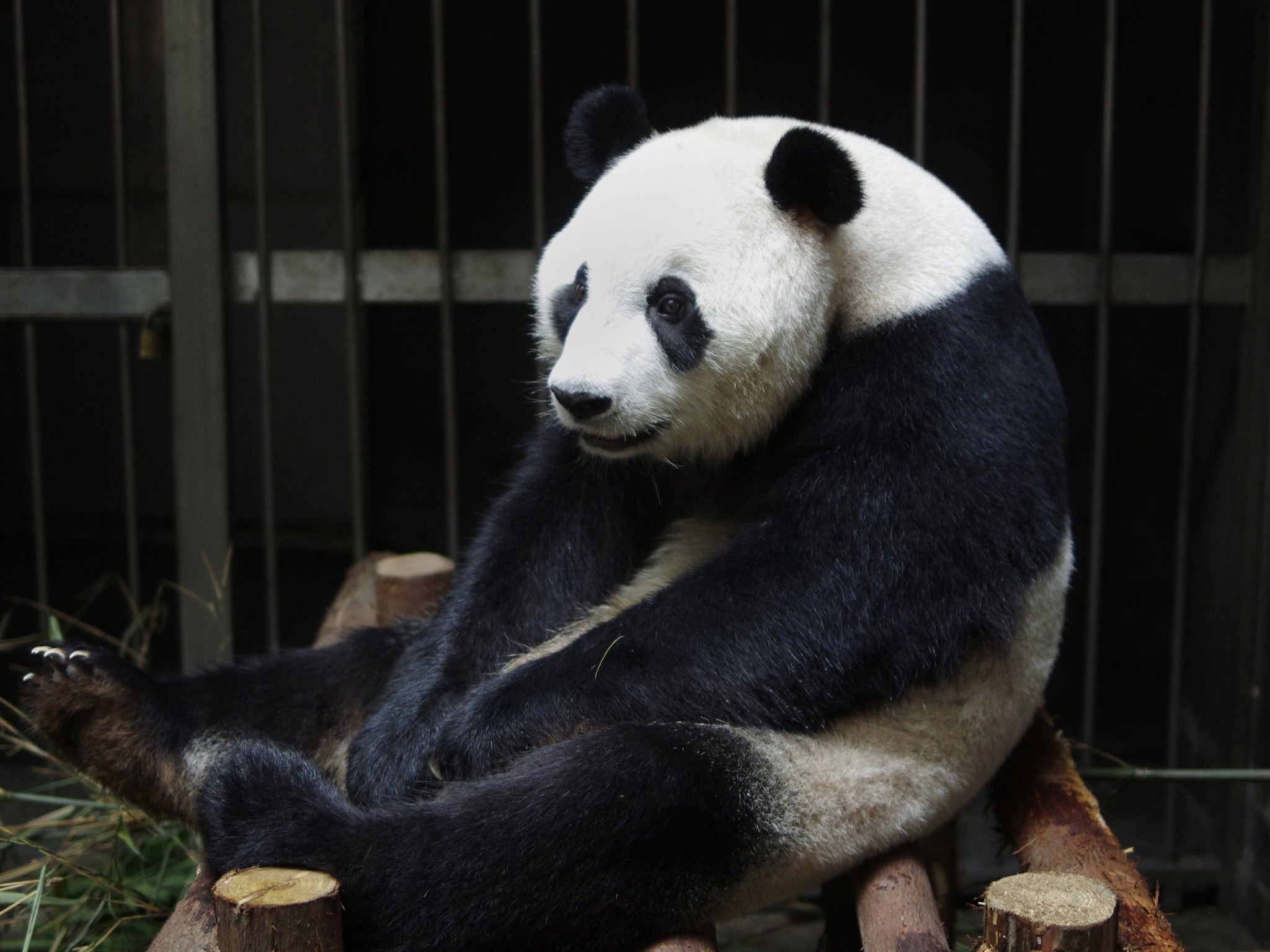Giant panda fakes pregnancy ‘to receive nicer food and round-the-clock care’
Ai Hin had been ‘under observation’ for two months and was scheduled for worlds’ first panda live birth

Your support helps us to tell the story
From reproductive rights to climate change to Big Tech, The Independent is on the ground when the story is developing. Whether it's investigating the financials of Elon Musk's pro-Trump PAC or producing our latest documentary, 'The A Word', which shines a light on the American women fighting for reproductive rights, we know how important it is to parse out the facts from the messaging.
At such a critical moment in US history, we need reporters on the ground. Your donation allows us to keep sending journalists to speak to both sides of the story.
The Independent is trusted by Americans across the entire political spectrum. And unlike many other quality news outlets, we choose not to lock Americans out of our reporting and analysis with paywalls. We believe quality journalism should be available to everyone, paid for by those who can afford it.
Your support makes all the difference.The world’s first live broadcast of a panda birth has been called off after experts said the “mother” involved may have been faking the pregnancy to receive better treatment.
“Phantom pregnancies” are common among giant pandas – but keepers at her breeding centre in Sichuan province believe six-year-old Ai Hin could be exhibiting learned behaviour that marks her out as smarter than the average bear.
The giant panda started showing signs of pregnancy including reduced appetite and mobility in July, at which point she was chosen to star in a heavily-publicised first ever live birth.
But after two months of observation, experts have told state news agency Xinhua that Ai Hin’s behaviour and physiological tests returned to normal.
Wu Kongju, an expert at the Chengdu Giant Panda Breeding Research Centre where Ai Hin is kept, explained that not all “fake” pregnancies among the animals are just down to hormonal changes.
“After showing prenatal signs, the 'mothers-to-be' are moved into single rooms with air conditioning and around-the-clock care,” Wu told Xinhua.
“They also receive more buns, fruits and bamboo, so some clever pandas have used this to their advantage to improve their quality of life.”
Part of the problem with breeding the highly-endangered species lies in the difficulty captive pandas have successfully giving birth.
There are 1,600 pandas left in the wild, and of the 300 or so in captivity only around a quarter will rear cubs.
Edinburgh zoo’s own female giant panda, Tian Tian, lost a cub late on in her pregnancy after a successful artificial insemination last year.
Her keepers tried again this year, and the latest state-of-the-art tests suggest she could give birth for real very soon.
Join our commenting forum
Join thought-provoking conversations, follow other Independent readers and see their replies
Comments